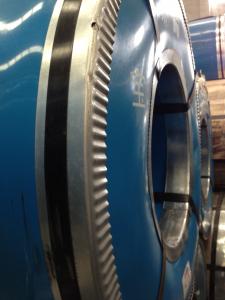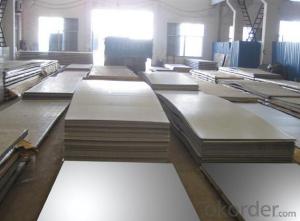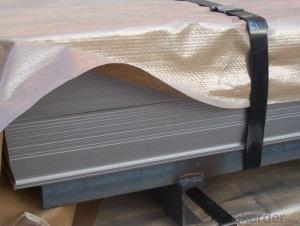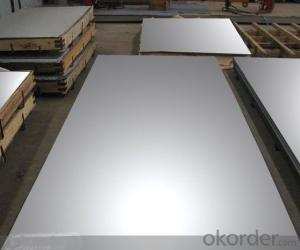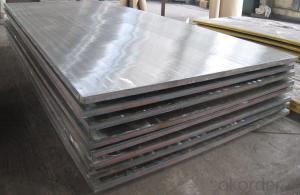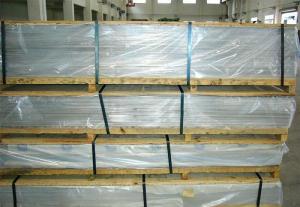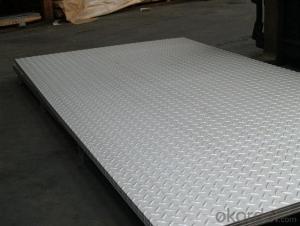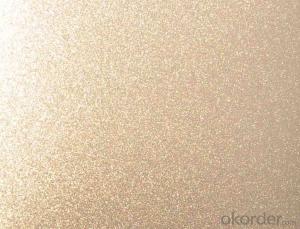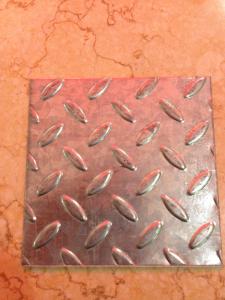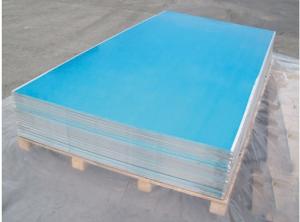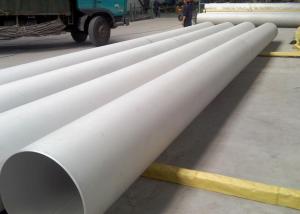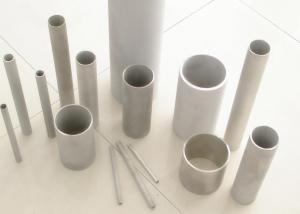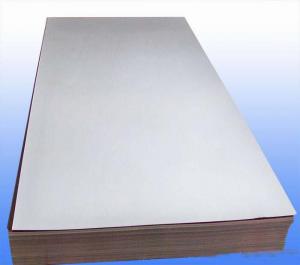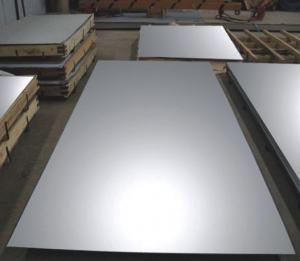Stainless Steel Sheet With Best Price
- Loading Port:
- Tianjin
- Payment Terms:
- TT or LC
- Min Order Qty:
- 8 m.t.
- Supply Capability:
- 5000 m.t./month
OKorder Service Pledge
OKorder Financial Service
You Might Also Like
1.Structure of Product Description
Cold rolled Stainless steel sheet is widely used in the field of construction field and decoration field, etc. There are many different grades, such as: 200 series, 300 series, 400 series, 900series, etc. The surface is including 2B, BA, Mirror Finish, Checkered, etc.
2. Main features of the product
a. Competitive price
b. Frist-Class Service.
c. Shortest service.
3. Image
4. Product detailed sizes:
1000mm*2000mm, 1250mm*2500mm,1500mm*3000mm, etc.
5. FAQ:
What is the quality standard?
---Usually our standard is GB3880-2006 or else.
What is the width range?
---It is from 1000mm to 2500mm, etc.
What is the length range?
---It is from 2000mm to 6000mm, etc.
What is the MOQ for your products yet?
---Normally it is around 3 tons/each size.
How many tons did you export in one year?
---Normally it is around 9000 tons totally.
Where is your client from?
---Normally it is from Japan, USA, ENGLISH, SINGAPORE, ETC.
What is your mainly products?
---Normally finished sheet, color coated stainless steel sheet, etc.
- Q: What is the standard size of a stainless steel sheet?
- The standard size of a stainless steel sheet can vary depending on the manufacturer and the specific application. However, in general, stainless steel sheets are commonly available in standard sizes of 4 feet by 8 feet (1220mm by 2440mm) or 4 feet by 10 feet (1220mm by 3050mm). These dimensions are widely used in various industries such as construction, manufacturing, and fabrication. Additionally, stainless steel sheets may also come in different thicknesses, ranging from 0.4mm to 6mm or more, depending on the intended use and requirements. It is important to note that custom sizes and dimensions can also be obtained from manufacturers for specific projects or applications that require non-standard sizes.
- Q: What are the standard sizes of stainless steel sheets?
- The standard sizes of stainless steel sheets vary depending on the specific industry and application. However, there are some commonly used standard sizes that are widely available. In the architectural and construction industry, the standard sizes of stainless steel sheets typically range from 4 feet by 8 feet (1220mm x 2440mm) to 5 feet by 10 feet (1524mm x 3048mm). These sizes are commonly used for cladding, roofing, and interior design applications. In the manufacturing and industrial sectors, stainless steel sheets come in various sizes, including 4 feet by 8 feet, 4 feet by 10 feet (1220mm x 3050mm), and even larger sizes like 5 feet by 12 feet (1524mm x 3658mm). These larger sizes are often used for fabrication, industrial machinery, and equipment manufacturing. It's important to note that custom sizes can also be fabricated based on specific project requirements. These custom sizes may include narrower or wider widths, longer or shorter lengths, or even different thicknesses to meet the needs of a particular application. Ultimately, the standard sizes of stainless steel sheets are determined by industry standards, market demand, and the capabilities of the manufacturers. It's always advisable to consult with suppliers or manufacturers to ensure the availability of the desired size before making a purchase.
- Q: Are stainless steel sheets suitable for welding or fabrication?
- Yes, stainless steel sheets are suitable for welding and fabrication. Stainless steel is known for its excellent weldability and can be easily welded using various welding processes such as TIG (Tungsten Inert Gas) or MIG (Metal Inert Gas). It also offers good formability, allowing it to be fabricated into different shapes and structures with relative ease.
- Q: What are the benefits of using textured stainless steel sheets in retail displays?
- There are several benefits of using textured stainless steel sheets in retail displays. Firstly, textured stainless steel sheets can add a modern and sleek aesthetic to any retail space. The unique texture and reflective properties of stainless steel create an eye-catching display that can attract customers and enhance the overall appearance of the store. This can help in creating a memorable brand image and setting the retail space apart from competitors. Secondly, textured stainless steel sheets are highly durable and long-lasting. Retail displays often endure a significant amount of wear and tear due to constant handling and movement of products. Stainless steel, with its corrosion-resistant properties, can withstand these challenges and maintain its appearance even after prolonged use. This durability ensures that the retail displays remain visually appealing and do not require frequent replacements. Additionally, textured stainless steel sheets are easy to clean and maintain. In a retail setting, it is crucial to have displays that are presentable at all times. Stainless steel is known for its hygienic qualities, as it is resistant to stains, bacteria, and odors. This makes it easier to keep the displays clean and ensures a high level of hygiene in the store. Furthermore, textured stainless steel sheets are versatile and can be customized to fit various retail display needs. They can be easily cut, shaped, and formed into different sizes and designs, allowing for creative freedom in designing displays that align with the brand image and product theme. This versatility makes stainless steel sheets suitable for a wide range of retail environments, from high-end boutiques to industrial-style stores. Lastly, textured stainless steel sheets are environmentally friendly. Stainless steel is a sustainable material as it is 100% recyclable and can be repurposed without losing its quality. By incorporating stainless steel sheets into retail displays, businesses can contribute to reducing their environmental footprint and promote sustainability. In conclusion, the benefits of using textured stainless steel sheets in retail displays include their modern aesthetic, durability, ease of maintenance, versatility, and eco-friendliness. By utilizing these sheets, retailers can enhance their brand image, create visually appealing displays, and provide a positive shopping experience for their customers.
- Q: Are stainless steel sheets suitable for architectural wire mesh?
- Architectural wire mesh benefits greatly from the use of stainless steel sheets. This material is a popular choice in architectural applications because of its many advantageous properties. Firstly, stainless steel is exceptionally durable and resistant to corrosion, making it perfect for both indoor and outdoor use over long periods of time. This corrosion resistance is particularly important for architectural wire mesh, as it ensures the material will maintain its integrity and appearance over time. In addition to this, stainless steel sheets offer excellent strength and stability, making them capable of withstanding the various stresses and strains that architectural wire mesh may encounter. This is crucial in applications where the mesh needs to support structural loads or provide security. Furthermore, stainless steel comes in different grades, allowing for customization to meet specific project requirements in terms of strength and flexibility. Stainless steel sheets also have a significant aesthetic appeal. Their sleek and modern appearance complements contemporary architectural designs and adds an elegant touch to any space. Moreover, stainless steel can be finished in different ways, such as brushed, polished, or coated, to achieve the desired visual effect. Lastly, stainless steel is a sustainable choice for architectural wire mesh. It is 100% recyclable, reducing environmental impact and supporting green building initiatives. Additionally, its long lifespan and low maintenance requirements contribute to its sustainability, minimizing the need for frequent replacements or repairs. In conclusion, stainless steel sheets are highly suitable for architectural wire mesh due to their durability, corrosion resistance, strength, aesthetic appeal, and sustainability. Architects and designers prefer them for their versatility in meeting various project requirements and their ability to create visually stunning and functional wire mesh installations.
- Q: What are the different types of surface finishes available for stainless steel sheets?
- Stainless steel sheets offer a range of surface finishes, each with its own distinct qualities and uses. 1. The most commonly used finish for stainless steel sheets is No. 1 Finish. It is achieved through hot rolling and annealing, resulting in a rough, dull appearance with visible grain lines. No. 1 finish is ideal for applications where a rough surface texture is desired, such as in industrial or structural uses. 2. No. 2B Finish is obtained by cold rolling the stainless steel sheet after a No. 1 finish, followed by annealing and descaling. It has a smooth, reflective surface with a slight matte appearance. No. 2B finish is frequently chosen for applications that require a clean, aesthetically pleasing look, such as kitchen appliances, architectural accents, and decorative items. 3. Known as a brushed finish, No. 3 Finish is achieved by mechanically polishing the stainless steel sheet with abrasive materials. It creates a satin-like appearance with a unidirectional pattern of fine lines. No. 3 finish is often used for decorative purposes, such as in furniture, signage, and elevator doors. 4. No. 4 Finish is similar to No. 3 finish, but it is achieved by mechanically polishing the stainless steel sheet with finer abrasives. This produces a smoother, more refined surface with a low gloss. No. 4 finish is commonly chosen for applications that require good corrosion resistance and easy maintenance, such as kitchen equipment, automotive trim, and architectural components. 5. The most reflective and luxurious surface finish for stainless steel sheets is No. 8 Mirror Finish. It involves progressively polishing the metal with finer abrasives until a highly reflective mirror-like surface is achieved. No. 8 mirror finish is often selected for decorative and high-end applications, such as architectural accents, jewelry, and luxury consumer goods. 6. Embossed finishes involve stamping or pressing a pattern onto the stainless steel sheet, creating a textured surface. These finishes can range from simple designs to intricate patterns, offering both aesthetic appeal and improved slip resistance. They are commonly used in applications that require both functionality and visual interest, such as in flooring, countertops, and wall cladding. In summary, the choice of surface finish for stainless steel sheets depends on the desired appearance, functionality, and performance requirements of the specific application.
- Q: What is called anti fingerprint stainless steel sheet?
- Is the surface sealing oil slightly. After sealing the oil, the surface is covered with a thin layer of ink, and the fingerprints are not easy to stick on. So also called anti fingerprint stainless steel.
- Q: What are the different types of stainless steel sheets available?
- When considering stainless steel sheets for your project or application, it is crucial to take into account the specific requirements, as there are several varieties available in the market, each with its own unique properties and applications. Here are some of the most common types: 1. Austenitic Stainless Steel Sheets: Widely used and highly popular, this type of stainless steel offers exceptional corrosion resistance, high strength, and good formability. It finds extensive usage in kitchen equipment, food processing plants, and pharmaceutical industries. 2. Ferritic Stainless Steel Sheets: Distinguished by a higher chromium content and lower carbon content in comparison to austenitic stainless steel, ferritic sheets are renowned for their outstanding stress corrosion cracking resistance. They are commonly utilized in automotive applications, architectural structures, and appliances. 3. Martensitic Stainless Steel Sheets: Boasting a higher carbon content than other types, martensitic sheets provide exceptional strength and hardness. They are frequently employed in applications requiring wear resistance, such as cutlery, surgical instruments, and turbine blades. 4. Duplex Stainless Steel Sheets: These sheets possess a mixed microstructure of austenite and ferrite, offering a combination of high strength and excellent corrosion resistance. They often find application in chemical processing plants, oil and gas industries, and marine environments. 5. Precipitation Hardening Stainless Steel Sheets: Heat-treatable and known for their high strength and corrosion resistance, precipitation hardening sheets are commonly found in aerospace applications, defense equipment, and high-performance industries. Considering the unique properties and advantages of each type, it is crucial to carefully evaluate the specific requirements of your project or application when selecting the appropriate stainless steel sheet.
- Q: Can stainless steel sheets be used for architectural columns?
- Yes, stainless steel sheets can be used for architectural columns. Stainless steel is a highly durable and versatile material that offers excellent resistance to corrosion, making it suitable for both indoor and outdoor applications. The sleek and modern appearance of stainless steel also adds an aesthetic appeal to architectural designs. Additionally, stainless steel sheets can be customized to various sizes and shapes, allowing for flexibility in column design. Whether it is for residential, commercial, or industrial projects, stainless steel sheets are a popular choice for architectural columns due to their strength, longevity, and visual appeal.
- Q: What is the area of stainless steel plate?
- First of all, I said, can not be sold by area, because the thickness of the price is not the same, I said the weight is how to draw, take SUS304 steel:Length (m) * width (mm) * thickness (mm) * density (7.93) /1000= weight
Send your message to us
Stainless Steel Sheet With Best Price
- Loading Port:
- Tianjin
- Payment Terms:
- TT or LC
- Min Order Qty:
- 8 m.t.
- Supply Capability:
- 5000 m.t./month
OKorder Service Pledge
OKorder Financial Service
Similar products
Hot products
Hot Searches
Related keywords
